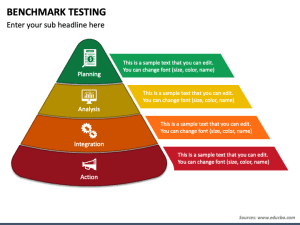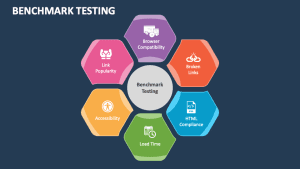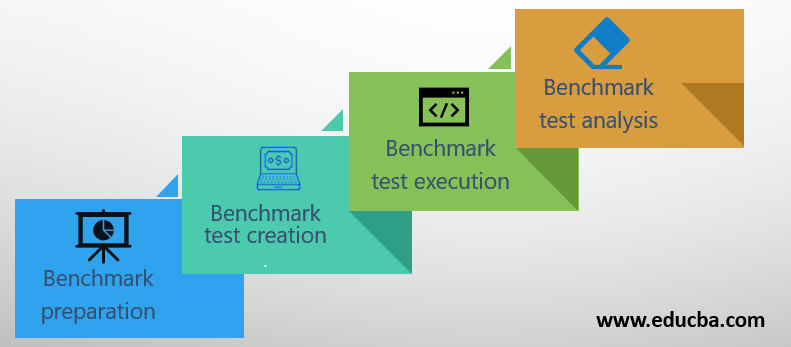Introduction:
In the ever-evolving world of software development, ensuring high-quality products has become a top priority for businesses. Software must not only meet business requirements but also excel in terms of performance, reliability, and user experience. This is where benchmark testing comes into play—a powerful technique used to evaluate software performance against established standards or benchmarks. In this article, we will delve into the significance of benchmark testing and explore how it can benefit software quality.
Understanding Benchmark Testing:
Benchmark testing is a crucial aspect of performance testing that goes beyond merely satisfying business requirements. It involves measuring various performance standards, such as product behavior, reliability, load capacity, speed, stability, and performance under stress. By subjecting software to benchmark testing, organizations can gain valuable insights into its strengths and weaknesses, leading to further improvement.
Purpose of Benchmark Testing:
The primary purpose of benchmark testing is to evaluate software performance against established standards or benchmarks. However, its applications are diverse:
- Performance Evaluation: Benchmark testing allows developers to assess the performance of new systems or products during the development process. It provides valuable feedback for improvement before releasing the software to the market.
- Optimization: For existing systems, benchmark testing can identify areas of optimization to enhance performance and efficiency.
- Quality Assurance: As part of the quality assurance process, benchmark testing ensures that software products meet performance expectations.
Types of Benchmark Tests:
Benchmark tests come in various types, each tailored to specific evaluation needs:
- System Benchmarking: Evaluates the performance of an entire system, including hardware, software, and network components.
- Application Benchmarking: Focuses on specific applications, such as databases, web applications, and office productivity software.
- Hardware Benchmarking: Analyzes the performance of hardware components, such as processors, graphics cards, and memory.
- Network Benchmarking: Measures the performance of network systems, including LANs and WANs.
- Storage Benchmarking: Evaluates the performance of storage systems, including hard drives, SSDs, and SANs.
Creating a Benchmark Test Plan:
To conduct effective benchmark testing, a well-structured test plan is essential. The following steps should be considered:
- Define Purpose: Clearly state the purpose of the benchmark test, specifying the system, hardware, software, or network components to be evaluated.
- Identify Components: Identify the specific components to be tested, such as hardware, software, or network elements.
- Metrics Selection: Determine the metrics that will be used to evaluate performance during the benchmark test.
- Choose Tools: Select appropriate benchmarking tools, considering both commercial and open-source options.

Executing Benchmark Testing:
Once the test plan is in place, follow these steps to execute benchmark testing:
- Set up Test Environment: Establish the test environment by configuring hardware, software, and network components to resemble the production environment.
- Prepare Test Data: Create relevant test data or use test data generators for accurate evaluation.
- Execute the Test: Perform the benchmark test according to the test plan and document the results.
- Analyze and Improve: Analyze the test results to identify areas for improvement and provide recommendations accordingly.
Factors Affecting Benchmark Testing Results:
Several factors can impact benchmark testing results:
- System Configuration: The system’s hardware, such as memory, processor, and storage, can significantly influence performance.
- Operating System and Drivers: Optimized drivers and updated operating systems contribute to better performance, while outdated components may hinder it.
- Environmental Factors: Temperature and humidity can also affect hardware performance.

Best Practices for Benchmark Testing:
To ensure accurate and meaningful results, adhere to these best practices:
- Define Clear Goals: Clearly outline the goals you want to achieve through benchmark testing.
- Standardized Tests: Use widely accepted and standardized benchmark tests in the industry.
- Realistic Workloads: Use real-world workloads that mimic actual use cases for accurate evaluation.
- Multiple Test Runs: Run benchmark tests multiple times on different systems for consistent and reliable results.
Interpreting Benchmark Test Results:
Interpreting benchmark test results requires a comprehensive understanding of the system and the benchmark tests being performed. Carefully review the results, compare them with similar systems, and identify areas for improvement.
Conclusion:
Benchmark testing plays a vital role in optimizing software performance and meeting user expectations. By setting clear goals, following best practices, and using appropriate tools, organizations can achieve accurate and meaningful results from benchmark testing. Combined with other testing techniques like BrowserStack’s real device cloud infrastructure, benchmark testing empowers businesses to deliver high-quality software products that excel in today’s competitive landscape.












